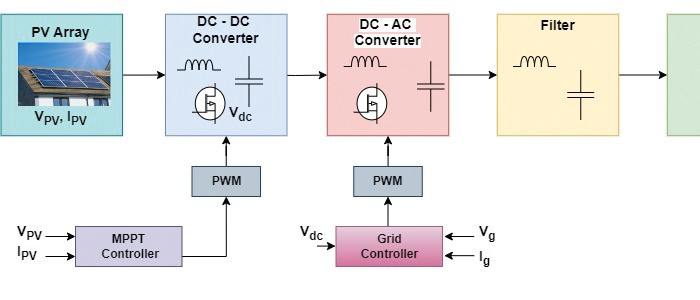- +61 7 3374 2877
- Email Us
Global agreements to reduce greenhouse gas (GHG) emissions to minimise the environmental impacts have set new targets for the power system to shift from fossil fuel-based generation methods to renewable energy sources. Especially, solar photovoltaic (PV) has become the dominant form of future energy technology since they can be deployed at the a low cost.
In Australia, 35.9% of the electricity generation has been from renewable sources in 2022 out of which 25.8% was from rooftop PV Systems [1]. According to the AEMO’s Integrated System Plan 2022, the Distributed Solar PV capacity is expected to increase by 5-fold from 15 GW at present to 69 GW by 2050 [2]. Integration of roof top solar has changed the typical load patterns experienced by the distribution transformers. It is reported that some transformers experience reverse power flow during low load conditions while having heavy PV generation. The change of transformer load pattern affects the thermal ageing of the transformers and therefore expected life of these units. In addition to thermal ageing solar PV systems introduce harmonics, and unbalanced loading conditions. Therefore, it is a timely task to update the transformer life estimation models considering multi-ageing factors such as thermal effects, harmonics, and other loading conditions. This article presents the harmonic issue introduced by the PV systems and their impacts on transformers, which can be used to improve the transformer life estimation.

Solar PV Harmonics & Inter-Harmonics
Considering a distribution network, in the past, the major component of the current harmonics was produced by the non-linear loads such as switch mode power supplies, LED lamps, etc.[3]. However, with the rapid integration of Solar PV systems through inverters into the distribution system, power electronics-based converters/inverters have becoming become a predominant source of harmonics. Figure 1 shows the block diagram of a typical grid-connected solar PV system. The solar PV inverter consists of two stages of power electronic converters, namely a DC-to-DC converter incorporating the Maximum Power Point Tracking controller and a DC to AC converter incorporating a grid controller, both based on PWM switching technique. The inverter also incorporates a low-pass filter circuit built with a combination of capacitors and inductors to filter out the switching distortion. Researchers have studied the reasons of the harmonics generation by the inverters and identified many factors that can influence harmonic generation through modelling, experiments, and field measurements. These studies show that instabilities in the DC converter output voltage due to varying solar irradiance conditions, power electronic switch dead times and , switching delays are some of the prominent factors contributing for harmonic generation. Recent studies have shown that PV inverters also lead to inter-harmonic super-harmonic distortions. Inter-harmonics are identified as non-integer multiples of the fundamental frequency, and super-harmonics are harmonics with a frequency greater than 2 kHz [4, 5].
To maintain the power quality in the system, several standards such as IEEE 519, IEEE 1547, and IEC 61000-3-2 specified the maximum allowable harmonic level with respect to the voltage and current for different system levels. The most common measure of harmonics is the Total Harmonic Distortion (THD) and these standards defined the specified values for THD and for individual harmonic content. It’s important to highlight that these parameters are computed in relation to the fundamental component of either the current or voltage. However, when assessing their influence on the lifespan of a transformer, the absolute magnitude of these harmonic distortions will become a critical concern.
Emerging Problems, and the Impact on Transformers
In many studies, investigations were performed to find out the power quality characteristics of single PV inverter model. However, there is a lack of comprehensive studies on how these individual inverter models will perform when they are aggregated and with non-linear loads.